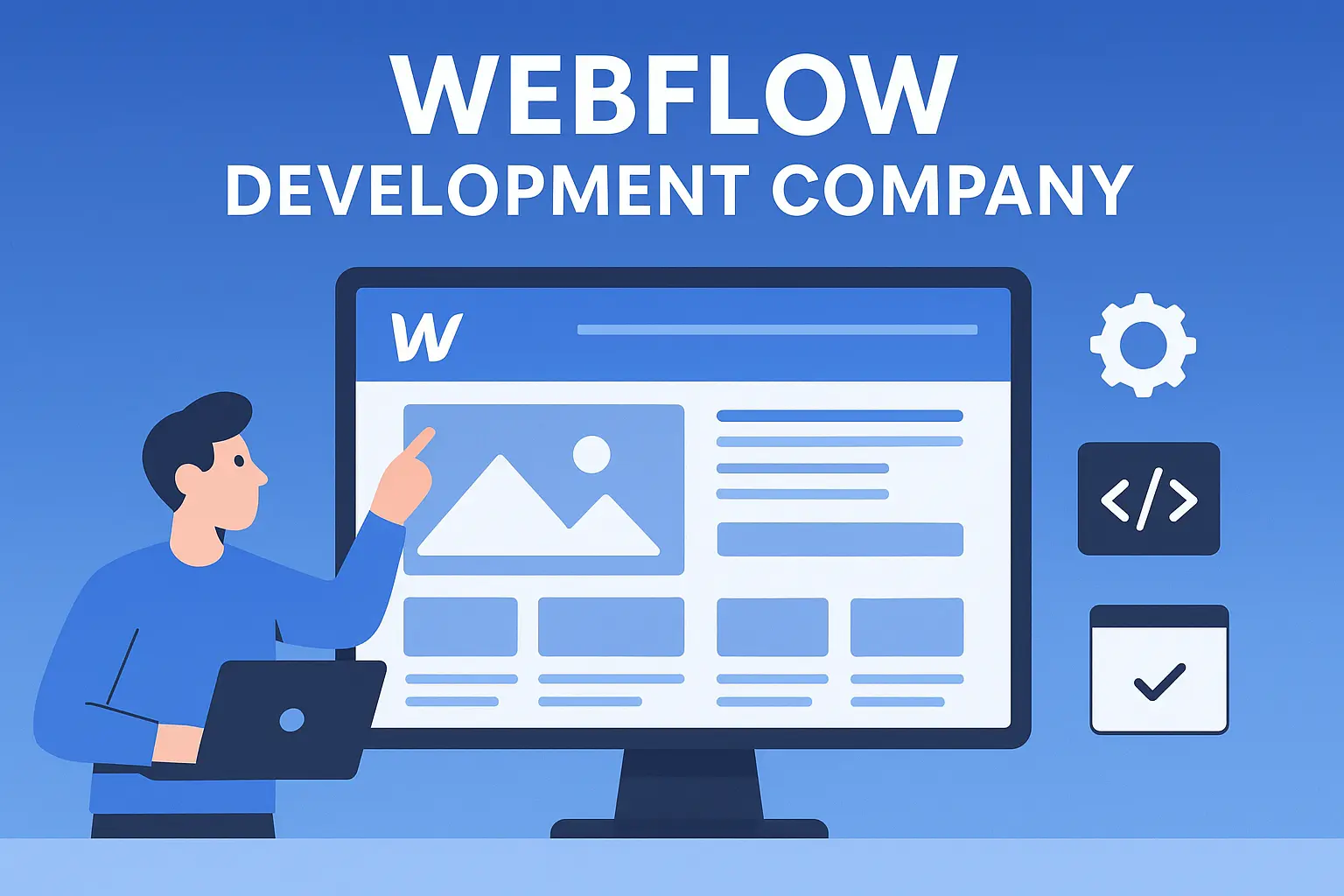Webflow vs WordPress: Choosing the Right Platform for your Website

1. Ease of Use: Drag-and-Drop vs Learning Curve
Webflow: Known for its visual, drag-and-drop interface, Webflow allows users to design websites without needing extensive coding knowledge. Its intuitive Designer makes it perfect for creatives and small business owners.
WordPress: While WordPress offers flexibility, its interface can feel overwhelming for beginners. Users may need to familiarize themselves with themes, plugins, and occasional coding.
Winner: Webflow, for its beginner-friendly and visually-driven interface.
2. Design and Customization
Webflow: With Webflow, you get unparalleled design freedom. The platform lets you create pixel-perfect, fully responsive designs from scratch or modify templates without limits.
WordPress: Customization depends heavily on themes and plugins. While some themes allow flexibility, achieving unique designs often requires custom coding or third-party tools.
Winner: Webflow, for its robust design capabilities.

3. Hosting and Performance
Webflow: Webflow includes hosting as part of its plans, offering lightning-fast servers, built-in SSL, and a globally distributed CDN for optimal performance.
WordPress: WordPress doesn’t provide hosting directly, so you’ll need to choose a third-party provider. Performance can vary depending on your hosting plan and setup.
Winner: Webflow, for seamless hosting and speed.

4. SEO Capabilities
Webflow: When comparing Webflow vs WordPress for SEO, Webflow excels with built-in tools like meta tags, alt attributes, and 301 redirects. Its clean, semantic code ensures better search engine indexing.
WordPress: WordPress requires plugins like Yoast SEO for optimization. While these plugins are effective, they add complexity and potential compatibility issues.
Winner: Webflow, for straightforward and integrated SEO features.

5. E-commerce Options
Webflow: Ideal for small to medium-sized e-commerce stores, Webflow offers an easy-to-use shopping cart, customizable product pages, and secure checkout options.
WordPress: WordPress relies on plugins like WooCommerce for e-commerce functionality. While powerful, these plugins can be resource-intensive and require additional setup.
Winner: Webflow, for streamlined e-commerce functionality.

6. Community and Support
Webflow: Webflow’s community is growing rapidly, with excellent resources like the Webflow University and responsive customer support.
WordPress: With its long history, WordPress boasts a massive community and countless forums, tutorials, and third-party developers for support.
Winner: WordPress, for its expansive community and resources.

7. Cost
Webflow: Webflow’s pricing is straightforward, bundling hosting and design tools into tiered plans. However, its cost can be higher compared to basic WordPress setups.
WordPress: WordPress itself is free, but additional costs for hosting, premium themes, and plugins can add up.
Winner: WordPress, for its potential affordability.
Final Verdict: Webflow or WordPress?
Choosing between Webflow vs WordPress ultimately depends on your needs:
- Choose Webflow if you prioritize design freedom, ease of use, and integrated hosting.
- Choose WordPress if you need extensive customization, community support, and a potentially lower initial cost.
Whether it’s Webflow vs WordPress for SEO, e-commerce, or overall usability, each platform has unique strengths. Evaluate your project’s requirements to decide which is the best fit.
Still unsure? Reach out to our team for expert guidance tailored to your needs!
Frequently asked questions
Yes. Agencies like AppsRow provide ongoing maintenance, content updates, bug fixes, speed optimization, SEO monitoring, and new feature development to keep your website performing at its best.
AppsRow offers 100% custom design, fast development, optimized CMS structure, lightning-fast performance, and seamless integrations. With expert Webflow developers and long-term support, AppsRow helps businesses grow online.
The cost depends on the project. Simple landing pages start at $300, business websites range from $500–$2,000, and advanced CMS or eCommerce sites range from $2,000–$6,000+. AppsRow provides flexible pricing based on your needs.
They provide custom UI/UX design, clean Webflow development, advanced animations, CMS structuring, SEO optimization, Zapier/Make integrations, and maintenance services—ensuring a fully scalable and high-performing website.
Certified partners bring years of experience, follow best practices, deliver pixel-perfect builds, and ensure your website performs at enterprise level. They also reduce development time and improve your website’s SEO and performance score.
Webflow Development Partners are highly experienced agencies that specialize in building fast, responsive, and SEO-optimized Webflow websites. They handle design, development, CMS setup, integrations, automations, and long-term support.
AppsRow delivers high-performance Webflow websites with modern UI, fast loading speed, perfect responsiveness, SEO optimization, and full CMS setup. With professional developers and seamless support, AppsRow helps businesses grow quickly and efficiently.
Yes. Agencies offer monthly maintenance plans that include backups, updates, bug fixes, content changes, SEO monitoring, and performance optimization.
Yes. Agencies can migrate your content, pages, blog posts, and CMS structure from WordPress to Webflow seamlessly - without losing SEO rankings.
Yes. Webflow is excellent for SEO because it outputs clean code, fast loading speeds, automatic SSL, built-in schema tools, alt tags, and editable meta fields. A Webflow Development Company ensures your website is fully optimized for Google.
A professional Webflow Development Company offers a full team (designers, developers, SEO experts, QA testers), faster delivery, better project management, and long-term support. This ensures a more reliable and scalable website compared to hiring a single freelancer.
A Webflow Development Company specializes in designing, developing, and optimizing websites using Webflow. They handle everything—from custom design, responsive development, animations, CMS setup, SEO, to integrations like HubSpot, Make, Zapier, and API connections.


